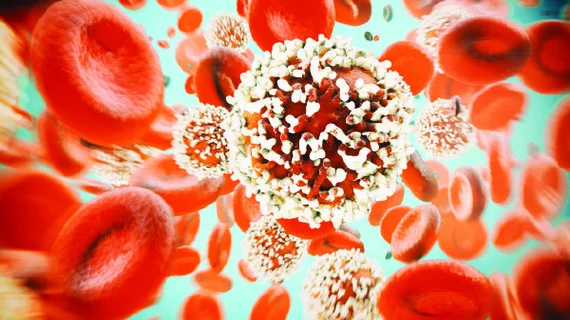A new radiopharmaceutical is earning praise for its ability to more accurately diagnose neuroendocrine tumors, researchers reported this month in the Journal of Nuclear Medicine.
The imaging agent—55Co-dotatate—is used during PET/CT scanning and produces images with better contrast, compared to other radiotracers. And although it’s only been tested in mice thus far, clinicians believe it can overcome some of the problems inherent in similarly labeled agents.
“Currently, 68Ga-dotatate is one of the most widely used imaging agents in patients with neuroendocrine tumors and 64Cu-dotatate is gaining increased interest,” Helge Thisgaard, PhD, with Odense University Hospital in Denmark, said in a statement. “However, there are limitations associated with both agents; particularly the short half-life of 68Ga-dotatate and the low positron yield and potential instability of 64Cu-dotatate.”
That’s where their newly created 55Co-labeled contrast agent comes in. It has a similar half-life to 64Cu and higher positron yield, Thisgaard said. They tested this new “unconventional” radiometal in a cohort of mice, and compared it to 64Cu-dotatate.
Ten male mice were injected with neuroendocrine tumor cells until each grew a 5 millimeter tumor. After this, the animals underwent PET/CT imaging; four with 68Ga-dotatate; three with 64Cu-dotatate and three with 55Co-dotatate.
Tumors absorbed each of the contrast materials very quickly within the first hour of imaging. 55Co-labeled dotatate however, revealed higher contrast uptake in “major sites of metastasis,” including kidney, muscle and liver tissue, compared to the amount absorbed by healthy tissue. This was especially true in the liver, where uptake was 15- to 30-times higher than that of the other radiopharmaceuticals.
The results will need to be investigated further, but the researchers believe this new material could help detect the spread of cancer and give clinicians and patients more confidence in their diagnoses.
“This study highlights the importance of…selecting the most appropriate radionuclide to obtain the best imaging agent for a given indication,” Thisgaard noted. “It illustrates that the use of promising, non-conventional PET isotopes may significantly improve the kinetics of the imaging agent, warranting further studies with novel combinations of biological vectors and new isotopes.”

